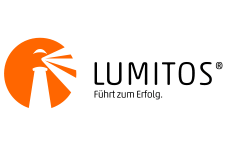Um alle Funktionen dieser Seite zu nutzen, aktivieren Sie bitte die Cookies in Ihrem Browser.
my.chemie.de
Mit einem my.chemie.de-Account haben Sie immer alles im Überblick - und können sich Ihre eigene Website und Ihren individuellen Newsletter konfigurieren.
- Meine Merkliste
- Meine gespeicherte Suche
- Meine gespeicherten Themen
- Meine Newsletter
10 Infografiken zum Thema Kupfer
rss| Sie können Ihre Recherche weiter verfeinern. Wählen Sie aus dem linken Bereich passende Suchfilter aus, um Ihre Ergebnisse gezielt einzugrenzen. |
If you’ve been watching the Olympics, you might have assumed that the medals given out are, as advertised, made of gold, silver, and bronze. Due to metal values, however, the reality is slightly more complicated. Giving out pure gold medals would be financially crippling for the International ...
in C&EN
In this month’s Periodic Graphics in Chemical & Engineering News magazine, we’re looking at the compositions of U.S. coins, as well as some of their quirky history.
The Chemistry of their Environmental Effects
Many of us enjoyed watching spectacular fireworks displays to usher in the new year. However, the vibrant colours of fireworks belie the effects that they can have on the environment. With this graphic, we take a look at some of the issues that they can cause.
It’s Fireworks Night here in the UK tomorrow, which means fireworks (obviously), bonfires and sparklers. We’ve looked at fireworks in a previous post,so this time around it’s time to take a look at the chemicals that go into producing sparklers, and their various roles. In sparklers, there are ...
There are an isolated few graphics online that look at elements involved in the manufacture of a smartphone – for example, this ‘Periodic Table of iPhones’ – but there’s actually remarkably little easily accessible information out there that details the specific compounds used for specific ...
In the wake of the recent announcement of a new £1 coin to be introduced in 2017, today’s post looks at some of the metals present in the coins of the United Kingdom. All of these coins are produced using alloys, or mixtures of metals; the main metals used include copper, nickel, zinc and iron. ...
This graphic looks at the colour of various metal and metalloid ions that occur during flame tests. Most people probably remember doing this experiment in school chemistry lessons, if not with the full range of ions shown here, but for the uninitiated a brief explanation of the origin of the ...
This graphic looks at the colours of transition metal ions when they are in aqueous solution (in water), and also looks at the reason why we see coloured compounds and complexes for transition metals. This helps explain, for example, why rust (iron oxide) is an orange colour, and why the Statue ...
Sodium Hydroxide & Ammonia Precipitates
This graphic, on the other hand, looks at how transition metals (and some non-transition metals) can be identified by the precipitates they form with sodium hydroxide and ammonia solutions. I’m going to keep the explanation of the reasons for the colour changes and precipitates fairly simple ...
Element Infographics
This graphic looks at some general properties of the transition metals – I had a little less space to work with than with the previous graphics, on account of the large number of elements that the transition metals encompass, but hopefully what’s included is still of use.
Sie erhalten passend zu Ihrer Suche die neusten Suchergebnisse per E-Mail. Dieser Service ist für Sie kostenlos und kann jederzeit abbestellt werden.













